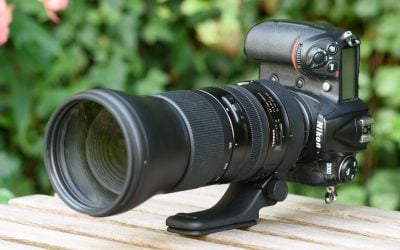Tamron 150-600mm G2 review
-
-
Written by Thomas
Quality
Sharpness and contrast
Let’s have a look at the theoretical performance of the new lens (first pair of MTF-charts) at the wide and the long end first and compare it to the performance of the Sigma Sports (second pair of MTF-charts) and Tamron’s A011 model (3rd pair of charts):
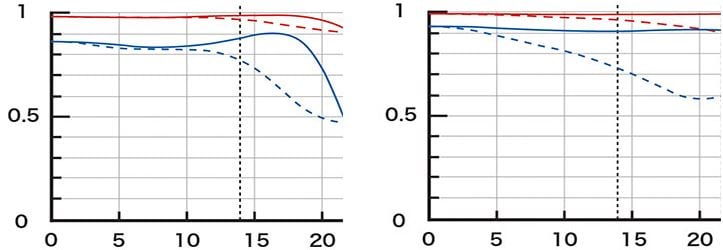
Above: MTF Tamron 150-600mm f/5-6.3 VC G2 (A022) at 150mm, f5.0 (left); 600mm, f6.3 (right)
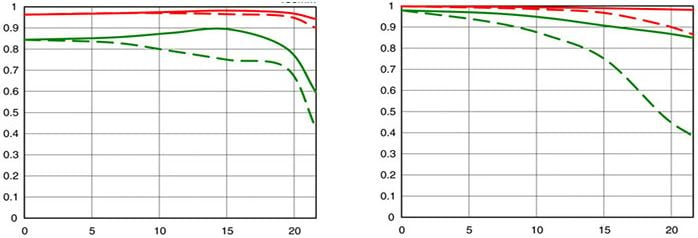
Above: MTF Sigma 150-600mm f/5.0-6.3 DG OS HSM Sports at 150mm, f5.0 (left); 600mm, f6.3 (right)
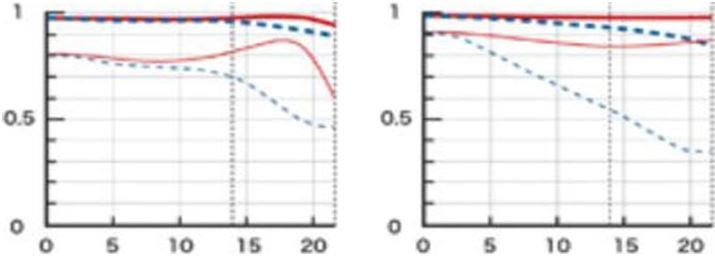
Above: MTF Tamron 150-600mm f/5-6.3 VC (A011) at 150mm, f5.0 (left); 600mm, f6.3 (right)
These charts show the lens-performance at the largest aperture. Higher values are better and the closer the dotted and the continuous lines of each color are together the less astigmatism (= resolution depends on the orientation of the test-pattern) the lens has. The x-axis displays the distance from the optical axis (=center of the sensor) in mm. I’ll show you the real-life performance at 4 mm (center), 13 mm (APS-C/DX-corner), and 20 mm (FF/FX-corner) on a D810.From the charts, the new Tamron should be the better performer as its lines always stay above the respective curves from the Sigma. But let’s see how this theoretical performance translates into real life results in the sharpness test based on Siemens-stars.
What follows are near-center results (first column) followed by APS-C/DX-corner results and FF/FX-corner results on a D810. Processing was done in Lightroom 6.6 from RAW at Camera Standard settings. Noise-reduction is set to 0, sharpening to 35/0.5/36/10, with no extra tone, color, or saturation-adjustment. White-balance was adjusted to a neutral white and I did some exposure compensation to make the brightness of all crops match. So you will not see light fall-off in the corners. CA-removal is ON.
The following are all 100% crops!
Let’s have a look at the performance wide open at different focal lengths first. Clicking on one of the crops leads to the comparison with the competition at the respective focal length.
Tamron 150-600mm f/5-6.3 VC G2 shot with Nikon D810
100% crop from center, APS-C/DX-corner, FF/FX-corner

Above: 150mm, f5.0

Above: 200mm, f5.3

Above: 300mm, f5.6

Above: 400mm, f6.0

Above: 500mm, f6.3

Above: 600mm, f6.3
The performance looks quite convincing peaking at around 200-300mm focal length. After that the FF/FX-corner becomes progressively softer but APS-C/DX-corner performance holds up pretty well up to 500mm and the center is good up to 600mm focal length.
Performance at f8.0:
Tamron 150-600mm f/5-6.3 VC G2 shot with Nikon D810
100% crop from center, APS-C/DX-corner, FF/FX-corner

Above: 150mm, f8.0

Above: 200mm, f8.0

Above: 300mm, f8.0

Above: 400mm, f8.0

Above: 500mm, f8.0

Above: 600mm, f8.0
The lens sharpens up quite nicely although the FF/FX-corners still could do better.
Performance at f11:
Tamron 150-600mm f/5-6.3 VC G2 shot with Nikon D810
100% crop from center, APS-C/DX-corner, FF/FX-corner

Above: 150mm, f11

Above: 200mm, f11

Above: 300mm, f11

Above: 400mm, f11

Above: 500mm, f11

Above: 600mm, f11
At f11 the lens performs very evenly over its zoom range although diffraction starts to soften the very good results between 200mm and 400mm focal length.
Following is the comparison with the competition at all focal lengths. If you want to skip this part, head over to the next section about performance at long distances.
Comparison at 150mm wide open:

Above: Tamron 150-600mm G2 at 150mm, f5.0

Above: Sigma 150-600mm “Sports” at 150mm, f5.0

Above: Tamron 150-600mm (A011) at 150mm, f5.0

Above: Sigma 150-600mm “Contemporary” at 150mm, f5.0
The Sigma Sports wins at 150mm in center sharpness, it is tied with the Tamron G2 in the APS-C/DX-corner, and in the FF/FX-corner both Tamrons are in the lead.
Comparison at 200/210mm, f5.6:

Above: Tamron 150-600mm G2 at 200mm, f5.6

Above: Sigma 150-600mm “Sports” at 210mm, f5.6

Above: Tamron 150-600mm (A011) at 200mm, f5.6

Above: Sigma 150-600mm “Contemporary” at 210mm, f5.6

Above: Nikon 200-500mm at 200mm, f5.6
At 200mm the Nikon 200-500/5.6E VR comes into play and takes the crown regarding sharpness in the center followed by the Sigma Sports and both Tamrons with the Sigma Contemporary being the softest. APS-C/DX-corner performance is pretty comparable between the lenses with the Tamron G2 edging out a small lead. In The FF/FX-corners the Nikon leads again with an excellent corner performance while the other lenses all are visibly softer.
Comparison at 300mm wide open:

Above: Tamron 150-600mm G2 at 300mm, f5.6

Above: Sigma 150-600mm “Sports” at 300mm, f5.6

Above: Tamron 150-600mm (A011) at 300mm, f5.6

Above: Sigma 150-600mm “Contemporary” at 300mm, f5.6

Above: Nikon 200-500mm at 300mm, f5.6
300mm seems to be the sharpest focal length with all five lenses. The Nikon performs excellent with the Tamron G2 only a little behind. Both are closely followed by the Tamron A011 and the Sigma Sports while the Sigma C has developed pretty soft FF/FX-corners.
Comparison at 400mm wide open:

Above: Tamron 150-600mm G2 at 400mm, f6.0

Above: Sigma 150-600mm “Sports” at 400mm, f6.0

Above: Tamron 150-600mm (A011) at 400mm, f6.0

Above: Sigma 150-600mm “Contemporary” at 400mm, f6.0

Above: Nikon 200-500mm at 400mm, f5.6
At 400mm a little softening starts to show with all lenses but the Nikon again proves to be the benchmark. Both Tamrons can keep up in the center but are a little softer towards the corners. Of the Sigmas the Sports version has very good FF/FX-corners and the Contemporary version is a bit behind in the outer reaches of a full-frame sensor.
Comparison at 500mm wide open:

Above: Tamron 150-600mm G2 at 500mm, f6.3

Above: Sigma 150-600mm “Sports” at 500mm, f6.3

Above: Tamron 150-600mm (A011) at 500mm, f6.3

Above: Sigma 150-600mm “Contemporary” at 500mm, f6.0

Above: Nikon 200-500mm at 500mm, f5.6
At 500mm things turn a bit around: The Nikon is no longer the benchmark at this focal length. Sharpness within the APS-C/DX image circle clearly favors both Tamrons. And in the FF/FX-corner both the Sigma Sports and the Tamron A011 perform best while the new Tamron G2 is a bit soft (as is the Sigma “C” and the Nikon).
Comparison at 600mm wide open:

Above: Tamron 150-600mm G2 at 600mm, f6.3

Above: Sigma 150-600mm “Sports” at 600mm, f6.3

Above: Tamron 150-600mm (A011) at 600mm, f6.3

Above: Sigma 150-600mm “Contemporary” at 600mm, f6.3
At 600mm the lead of both Tamrons in the APS-C/DX image circle continues with still very good center performance but clearly softening APS-C/DX-corners. And the Sigma Sports again produces the best FF/FX-corner. But for most applications requiring 600mm, I’d say the better center sharpness of the Tamrons is more valuable than the better FF/FX-corner sharpness of the Sigma Sports.
Overall I’d give both Tamrons high marks in this test although they are topped by the Nikon from 200mm to 400mm. The differences in optical performance between the new Tamron generation (A022) and the older A011 model are probably down to individual sample variations. At least I could not find a significant difference in my testing between both models although the MTF-chart indicates an improved FF/FX-corner performance for the G2 (A022) model at 600mm.
Performance with Tamron teleconverter TC-X14 and TC-X20
With the new 150-600 G2 super-telephoto zoom Tamron also developed two teleconverters for 1.4x and 2.0x magnification. They don’t fit on the A011 model and Tamron currently lists only their new A022 lens as compatible with the new teleconverter. The TC-X14 converts the 150-600mm f/5-6.3 G2 lens into a 210-850mm f/7-9.0 lens and the TC-X20 converts it to a 300-1200mm f/10-13 lens.
Performance with 1.4x tele-converter TC-X14 at 850mm shooting at a distance of 34m:
Tamron 150-600mm f/5-6.3 VC G2 + TC-X14 shot with Nikon D810
100% crop from center, APS-C/DX-corner, FF/FX-corner

Above: 850mm, f9

Above: 850mm, f11

Above: 850mm, f16
In combination with a 1.4x teleconverter there is some loss of overall contrast wide open (f9.0), but fine details are still reproduced pretty well in the center. Stop down to f11 and the center looks very good again and the FF/FX-corner gains some definition. Stopping down to f16 does not yield better results as diffraction is taking its toll.To test the performance with 2.0x tele-converter TC-X20 at 1200mm I had to shoot from the same distance of 34m as above because I couldn’t get any further away in the hall where I was shooting. This resulted in a magnification of my test-target of 1.4x which also effectively positioned my DX target (normally 13mm off axis) at the border of a full frame sensor (18mm off axis) and my center target (normally 4mm off axis) at around 6mm off axis. To compensate for that I added the target in the exact center of the image as the left-most crop. So this test is not comparable to the others above but still gives you a good impression of what the combo can produce.
Tamron 150-600mm f/5-6.3 VC G2 + TC-X20 shot with Nikon D810
100% crop from center, APS-C/DX-corner, FF/FX-corner
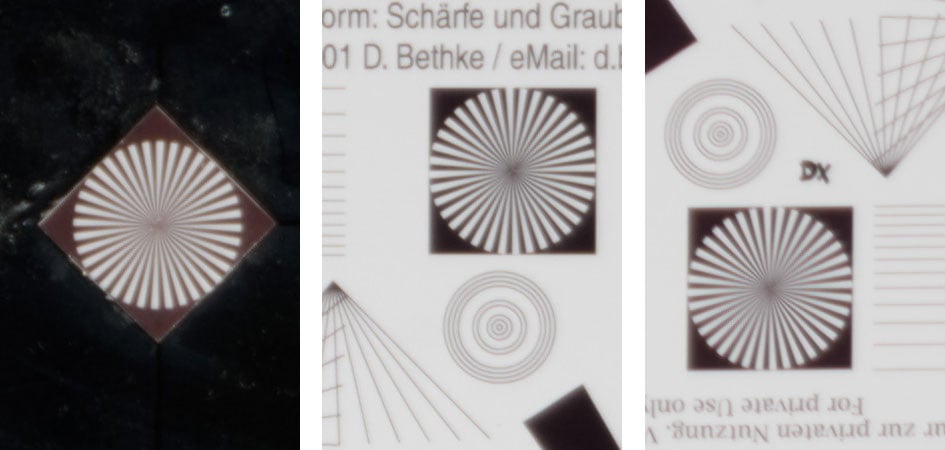
Above: 1200mm, f14
Now at 1200mm the results are very soft, but that was to be expected. If you pull up clarity (+50) and use stronger sharpening with a radius of 1.0 (50/1.0/72/10) and you can recover quite a bit of detail contrast:
same as above with clarity +50 and sharpening at 50/1.0/72/10
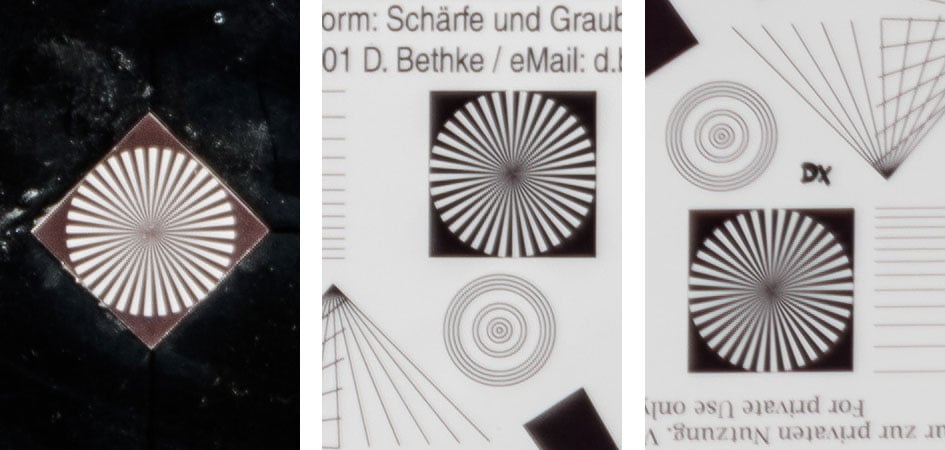
Above: 1200mm, f14
Performance at long distances
The Siemens-star test-targets are shot at a distance of 40x focal length (i.e. at 20 m for 500 mm focal length). But performance of lenses also depends on the shooting distance. Therefore I present another series of test-shots of a city-scape around 1km away. Processing was done in Lightroom 6.6 from RAW at Adobe Standard settings. Noise-reduction is set to 0, sharpening to 35/0.5/36/10, with no extra tone, or saturation-adjustment. There’s no tinkering with vignette-control so you see it here as it is produced by the lens. I used AF in live view at the largest aperture and did not change focus for other apertures.
You can click on each image or crop to access the large original. Please respect our copyright and only use those images for personal use.
The main image shows the complete scene wide open to give you an impression of the angle of view and to judge vignetting. You can access the respective shots at smaller apertures via the links beneath each image. All shots were made at ISO 200 and VC switched off. Following the main image are 100% crops from the center, the APS-C/DX-corner and the FF/FX-corner from the new Tamron (A022). I shot the A011 model at the same morning 20 minutes earlier and inserted the wide-open crops directly beneath the respective crops from the A022 model. And as every lens is a bit decentered I used the best diagonal in this comparison for each lens and focal length.
One word of warning: Shooting over a distance of 1km with such a long lens is a very risky business even from a heavy duty tripod whose head alone weighs over 2kg. Extending the lens to its longest focal length and using the lens hood gives every gust of wind a long lever to shake the whole setup in a way that you can easily see in magnified live view – especially when the focal lengths are approaching or even exceeding 1000mm! I switched to 200 ISO to stay on the safe side with short shutter speeds and 320 ISO when testing the lens with teleconverter. Then there is the optical quality of the air between the camera and the target: When the sun warms the ground thermals (bubbles of warm air) can develop which have a different refractive index than the surrounding cooler air and can act like a lens and defocus or blur parts of the image. You can see many instances of partial blurring in these shots. So in evaluating the lens one should concentrate on the best areas in each shot. To make a long story short: I tried to bring you valid shots of the new lens, but take the results with the caveats above.
Let’s start with 150mm focal length:
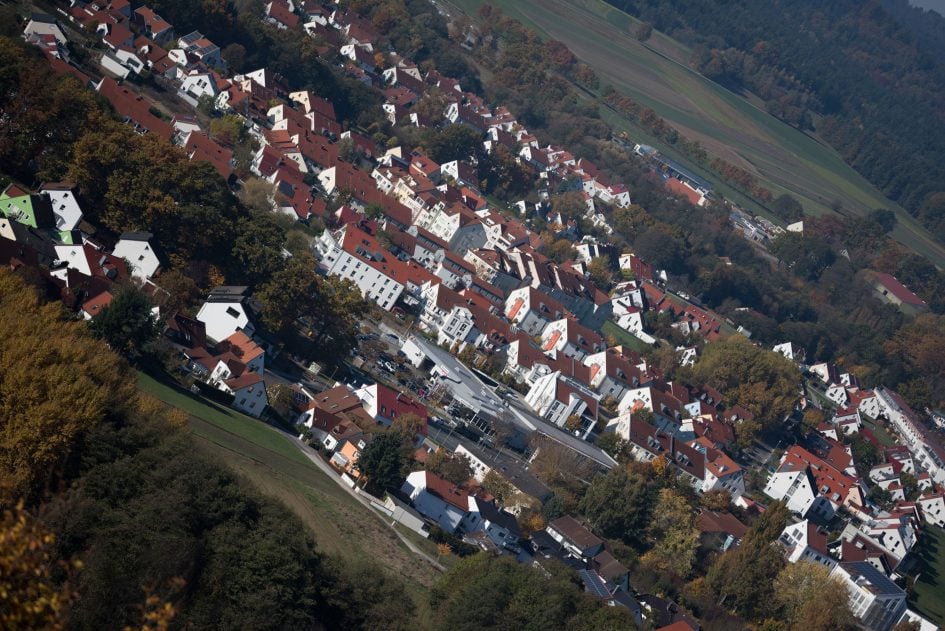
Above: Tamron 150-600mm f/5-6.3 VC G2 at 150mm, f5.0, ISO 200; also available at f5.6, f8.0, f11

Above: Tamron 150-600mm f/5-6.3 VC G2 at 150mm, f5.0, ISO 200

Above: Tamron 150-600mm f/5-6.3 VC (A011) at 150mm, f5.0, ISO 200

Above: Tamron 150-600mm f/5-6.3 VC G2 at 150mm, f5.6, ISO 200

Above: Tamron 150-600mm f/5-6.3 VC G2 at 150mm, f8.0, ISO 200

Above: Tamron 150-600mm f/5-6.3 VC G2 at 150mm, f11, ISO 200
Results at 200mm:
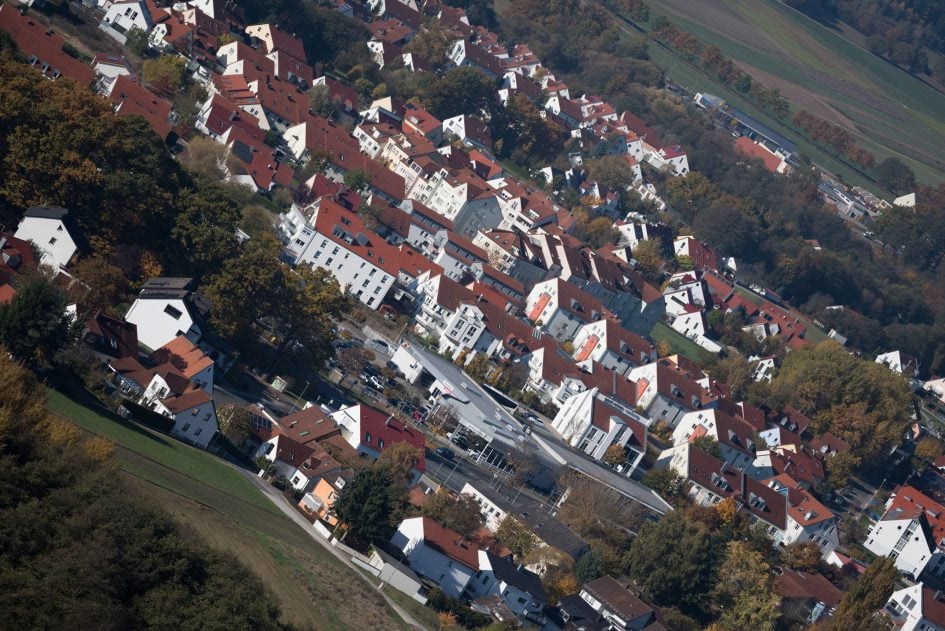
Above: Tamron 150-600mm f/5-6.3 VC G2 at 200mm, f5.3, ISO 200; also available at f5.6, f8.0, f11

Above: Tamron 150-600mm f/5-6.3 VC G2 at 200mm, f5.3, ISO 200

Above: Tamron 150-600mm f/5-6.3 VC (A011) at 200mm, f5.3, ISO 200

Above: Tamron 150-600mm f/5-6.3 VC G2 at 200mm, f8.0, ISO 200

Above: Tamron 150-600mm f/5-6.3 VC G2 at 200mm, f11, ISO 200
Results at 300mm:
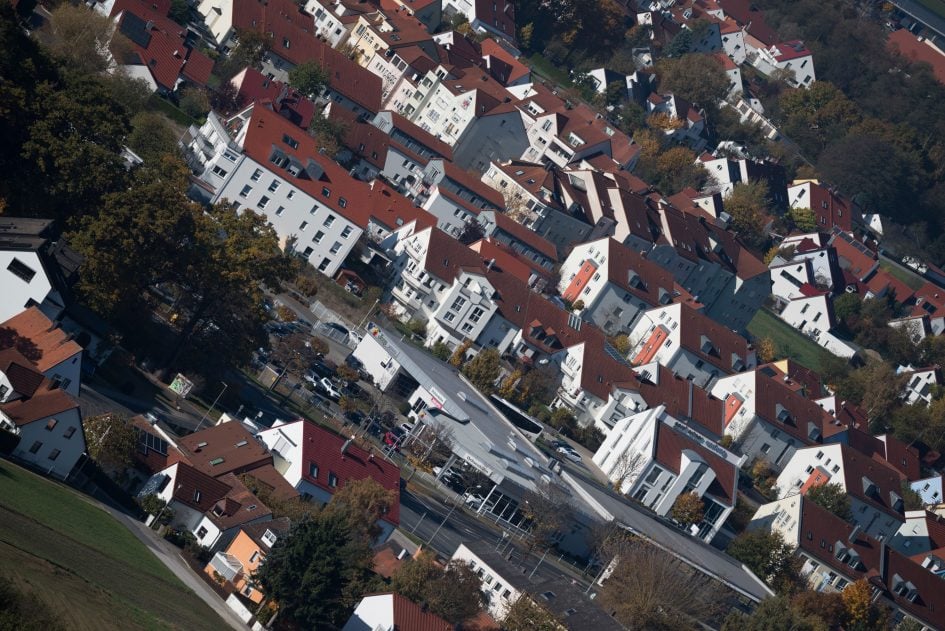
Above: Tamron 150-600mm f/5-6.3 VC G2 at 300mm, f5.6, ISO 200; also available at f8.0, f11

Above: Tamron 150-600mm f/5-6.3 VC G2 at 300mm, f5.6, ISO 200

Above: Tamron 150-600mm f/5-6.3 VC (A011) at 300mm, f5.6, ISO 200

Above: Tamron 150-600mm f/5-6.3 VC G2 at 300mm, f8.0, ISO 200

Above: Tamron 150-600mm f/5-6.3 VC G2 at 300mm, f11, ISO 200
Results at 400mm:
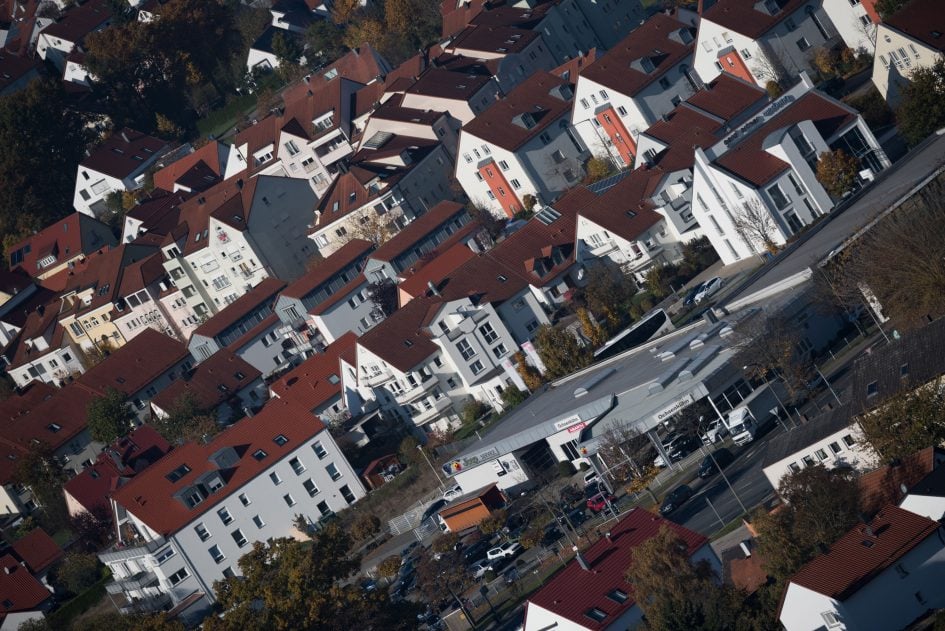
Above: Tamron 150-600mm f/5-6.3 VC G2 at 400mm, f6.0, ISO 200; also available at f8.0, f11

Above: Tamron 150-600mm f/5-6.3 VC G2 at 400mm, f6.0, ISO 200

Above: Tamron 150-600mm f/5-6.3 VC (A011) at 400mm, f6.0, ISO 200

Above: Tamron 150-600mm f/5-6.3 VC G2 at 400mm, f8.0, ISO 200

Above: Tamron 150-600mm f/5-6.3 VC G2 at 400mm, f11, ISO 200
Results at 500mm:
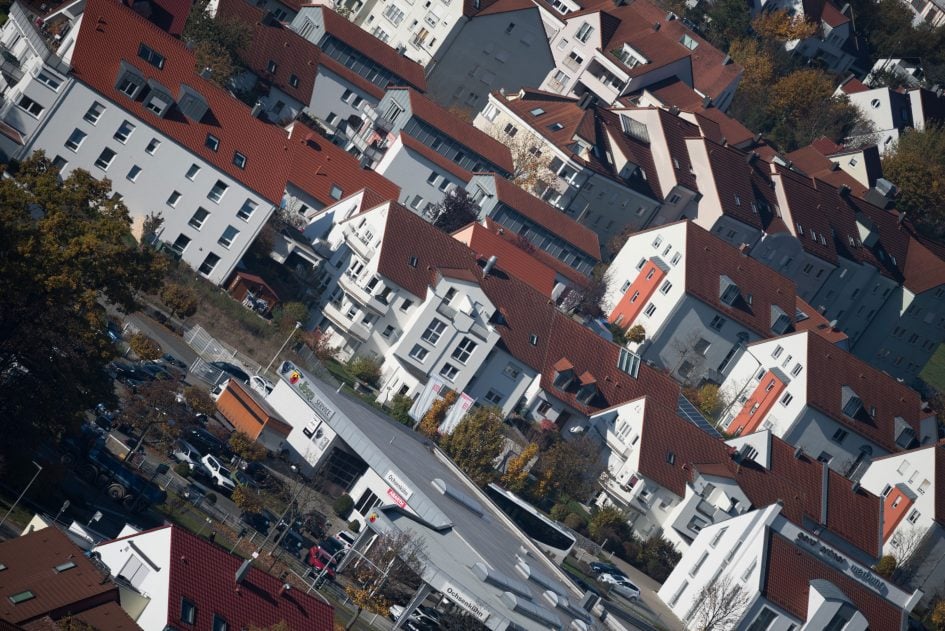
Above: Tamron 150-600mm f/5-6.3 VC G2 at 500mm, f6.3, ISO 200; also available at f8.0, f11

Above: Tamron 150-600mm f/5-6.3 VC G2 at 500mm, f6.3, ISO 200

Above: Tamron 150-600mm f/5-6.3 VC (A011) at 500mm, f6.3, ISO 200

Above: Tamron 150-600mm f/5-6.3 VC G2 at 500mm, f8.0, ISO 200

Above: Tamron 150-600mm f/5-6.3 VC G2 at 500mm, f11, ISO 200
Results at 600mm:
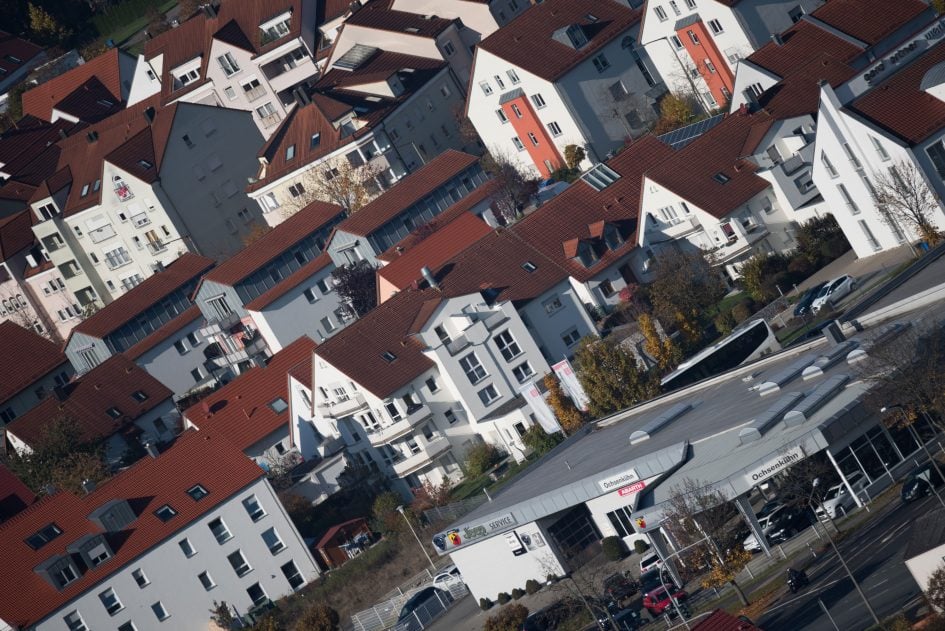
Above: Tamron 150-600mm f/5-6.3 VC G2 at 600mm, f6.3, ISO 200; also available at f8.0, f11

Above: Tamron 150-600mm f/5-6.3 VC G2 at 600mm, f6.3, ISO 200

Above: Tamron 150-600mm f/5-6.3 VC (A011) at 600mm, f6.3, ISO 200

Above: Tamron 150-600mm f/5-6.3 VC G2 at 600mm, f8.0, ISO 200

Above: Tamron 150-600mm f/5-6.3 VC G2 at 600mm, f11, ISO 200
The new Tamron G2 repeats its good performance from the test-charts also in the long-distance shots. Up to 400mm focal length its performance is very good in the APS-C/DX image circle and good FF/FX-corners. At 500mm the lens starts getting softer: just a little at 500mm but clearly visible at 600mm. Stopping down to f8 brings only little improvement but heightens the risk of blur from a longer shutter speed. Use f11 or smaller apertures only when you need the larger depth of field because diffraction clearly takes its toll.
The new G2 (A022) model also outperforms the older A011 model in the APS-C/DX- and FF/FX-corners at every focal length except 150mm and 600mm where both lenses look almost identical. This may be due to less field-curvature from the added lens element in the new model.
Long-distance performance with teleconverter
Let’s see how the lens performs with the TC-X14 teleconverter attached. These shots are from another day with higher humidity in the air. So in general there is some loss of overall contrast compared to the shots above. But you can still judge resolution of fine detail pretty well. I cranked the ISO up to ISO 320 to make sure that the shutter speeds were still on the safe side with a maximum aperture of f7.1-f9.0 and focal length from 210mm up to 850mm. I set noise reduction (for luminance) to 10 and also used a bit stronger sharpening of 40/1.0/50/10 in these shots. Following is the performance at different focal lengths wide open and at f11. As usual you can click on each crop to access the large original.
Tamron 150-600mm f/5-6.3 VC G2 with TC-X14 shot with Nikon D810
100% crop from center, APS-C/DX-corner, FF/FX-corner

Above: at 210mm, f7.1, 320 ISO

Above: at 210mm, f11, 320 ISO

Above: at 280mm, f7.6, 320 ISO

Above: at 280mm, f11, 320 ISO

Above: at 420mm, f8.0, 320 ISO

Above: at 420mm, f11, 320 ISO

Above: at 550mm, f8.5, 320 ISO

Above: at 550mm, f11, 320 ISO

Above: at 700mm, f9, 320 ISO

Above: at 700mm, f11, 320 ISO

Above: at 850mm, f9, 320 ISO

Above: at 850mm, f16, 320 ISO
If you stop down to f11 performance is very respectable up to 550mm focal length (400mm on the lens). Sharpness and contrast is pretty close to its native performance between 200 and 600 mm without teleconverter albeit at a one stop smaller aperture. So you can confidently shoot this lens with the 1.4x teleconverter even at the shorter focal lengths should you not have the time to swap out the teleconverter while shooting.
And finally performance with TC-X20 teleconverter at 800mm, 1000mm and 1200mm focal length wide open and at f16. ISO again is at 320, noise reduction and sharpening set like with the TC-X14 above:
Tamron 150-600mm f/5-6.3 VC G2 with TC-X20 shot with Nikon D810
100% crop from center, APS-C/DX-corner, FF/FX-corner

Above: at 800mm, f12, 320 ISO

Above: at 800mm, f16, 320 ISO

Above: at 1000mm, f13, 320 ISO

Above: at 1000mm, f16, 320 ISO

Above: at 1200mm, f13, 320 ISO

Above: at 1200mm, f16, 320 ISO
Wide open the images have clearly lost contrast and show a lack of fine detail. Stopping down to f16 improved the situation visibly at 800mm and 1000mm while 1200mm did not respond to stopping down. The 2x teleconverter clearly shows the limits of this lens when pixel-peeping at 100%.
But what if you don’t need the full 36MP resolution because you’re presenting the image on a 4k/UHD display or you produce a smaller print? Then you can either resize/down-sample the shot with 2x teleconverter by 2 and end up with a 9MP image or you crop 2x into the shot made without teleconverter leaving you with 9MP from within the APS-C/DX image-circle that achieves the same field-of-view as with the 2x teleconverter. Here’s how the results from the center of the image compare: left is a 920x920px crop from the 1000mm shot at f13 reduced 2x in size to 460x460px, right is a 460×460 crop from a 500mm shot at f8 as is. Both shots were made at the same day and I used the same standard sharpening of 35/0.5/36/10 in this comparison. The crops are shown at 100%.
Teleconverter vs. cropping: Tamron 150-600mm f/5-6.3 VC G2 with TC-X20 and without

Above: resized crop at 1000mm (with TC-X20), f13, 320 ISO, 1/640 sec (left); 100% crop at 500mm (w/o TC), f8.0, 200 ISO, 1/1250 sec (right)
There is a slight advantage for the down-sampled 1000mm shot on the left compared to the original 500mm shot on the right. Although the latter has the benefit of a 2/3 stops lower ISO and an 2x faster shutter speed. And at 500mm you capture a wider scene from which to choose your crop. So depending on the viewing size of your images it may be a viable alternative to simply crop into your photo instead of using a teleconverter. My experience tends to favor the less extreme TC-X14 and only use the teleconverter when it’s absolutely needed for the reach. The 600mm maximum focal length of the Tamron already takes you so far that a teleconverter should seldom become a necessity. And don’t forget: a teleconverter always reduces your focal ratio by one or two stops and through larger magnification of shake forces you to reduce shutter speeds 1.4x or 2x thus putting you at an overall disadvantage of 1.5 or 3 stops.
Rendering of out-of-focus point-light sources
This test is for the rendering of point-light sources in a far-away out-of-focus background. The circle of confusion that is produced by this test is pretty indicative of Bokeh performance (in the background) and light fall-off. Ideally the out-of-focus image of the point-light is evenly lit and perfectly circular, with no “onion-rings”, and without coloration. Lenses also produce an effect known as “cat’s eye” the further away from the optical axis the point-light is projected. This is due to optical vignetting in the lens barrel when light enters the lens from an angle.

Above: Tamron 150-600mm f/5-6.3 VC G2 at 600mm, f6.3; also available at f8.0, f11, f16

Above: Tamron 150-600mm f/5-6.3 VC G2; 50% crops from center, DX-corner, FX-corner
As the 50% crops above show: The Tamron 150-600/5-6.3 VC G2 produces a very large circle of confusion. This was to be expected with the large entrance pupil of 95mm. It exhibits an even light-distribution across the circle but with a clearly visible brighter outline. The outlining is of the same color as the main body of the Bokeh ball which is an indicator of very low longitudinal CA of this lens. The lens shows a mild cat’s-eye effect towards the borders/corners of the sensor. BTW.: The A011 version of this lens shows the same characteristic.
Let’s see how this analysis of out-of-focus point-light sources translates into Bokeh-performance shooting a book-shelf.
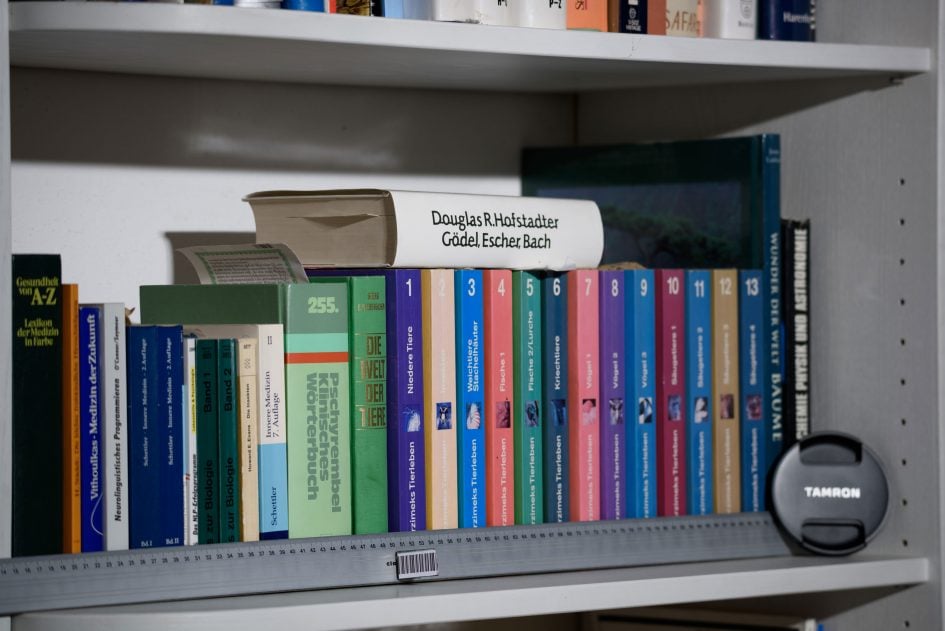
Above: Tamron 150-600/5-6.3 VC G2 at 150mm, f5.0; also available at f5.6, f8.0, f11

Above: Tamron 150-600/5-6.3 VC G2 at 150mm, f5.0; 50% crops from foreground, middle-ground, background
I had to shoot this at 150mm as the room did not allow for a larger distance. And with the same magnification as in all my other tests the Tamron suffers from the small focal ration of f5.0 here: it shows only slight blurring with a nervous foreground and a CA-free middle-ground.
So the results of the Bokeh test are mixed: immediately in front or behind the plane of sharpest focus the lens does not produce an impressive Bokeh. It simply doesn’t have a large enough focal ratio for this. But the further away the background is behind the subject the better the isolation and blurring becomes.
Flare/ghosting
Catching a strong light-source shining directly into the lens can not always be avoided even with long telephoto lenses. That could produce strange colorful ghosts-images or reduce contrast considerably through flare and glare. The appearance of flare and ghosting depends on factors like the aperture and the angle of the light hitting the lens. So to judge the proclivity of the Tamron for these artifacts I went through a series of well calculated shots against a strong light source to provoke glare and ghosting.
The results are a bit mixed: Light inside the frame provokes the usual ghosting although relatively well controlled (see left image below). But there is a position where the light is clearly outside the image-frame but still produces a strong washout that reduces contrast considerably. See the right image below.
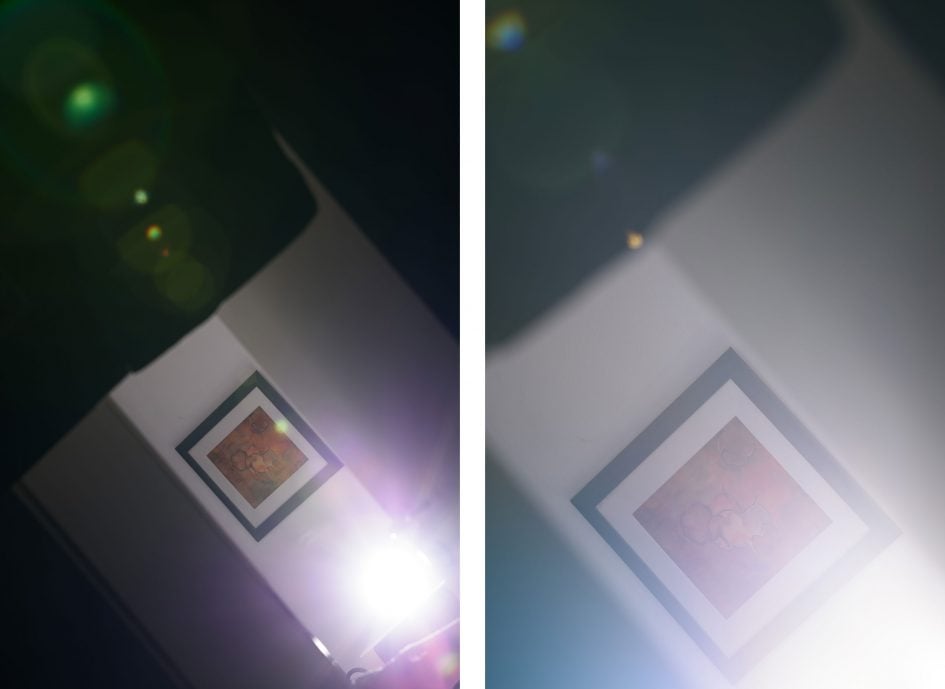
Above: Flare and ghosting. Strong light hitting the Tamron 150-600mm f/5-6.3 VC G2 at 150mm, f8.0 (left); 300mm f8.0 (right)
This effect is so strong that you normally see it in the viewfinder and can avoid that particular position of a strong light source.




